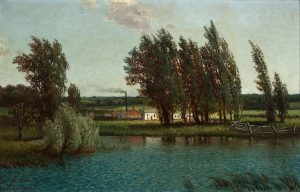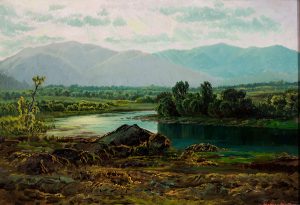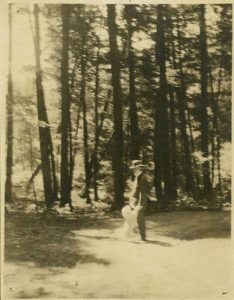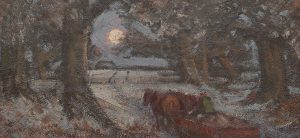
Did you know that August marks the establishment of numerous environmental movements in Canada? From the signing of the Migratory Bird Convention in 1916, which sought to protect bird species from overhunting and shrinking habitats, to the creation of the Pollution Prevention Act in 1972, which banned the deposit of waste in Arctic waters, August remains a significant month for environmental reflection. As an ardent conservationist himself, Homer Watson demonstrated a fervent passion for nature through both his artwork and his resolve to protect the landscapes of Doon.

Homer fought vehemently to prevent the landscapes he painted from being industrially encroached upon. As someone who remained “pre-eminently a man of the soil” (VanEvery, With Faith, Ignorance, and Delight 8) throughout his life, Homer’s art aimed to emulate on canvas how nature “play[ed] through and expand[ed] his soul” (55). It is easy to sense his love for the natural world within works such as Pattinson’s Mill and Untitled Quimby Summer Landscape, both of which utilize cool tones and soft brush strokes to reflect a sense of tranquility and serenity outdoors.

In 1913, Cressman’s Bush, now called Homer Watson Park, was threatened with deforestation when a sawmill owner attempted to purchase the land. Cressman’s Bush was one of Homer’s favourite areas in the Doon region as well as a significant source of inspiration for his landscape paintings; the photographs below of Homer lounging in and walking his dog through Cressman’s Woods demonstrate how at ease he felt in nature’s grasp. Determined not to allow the forested area to be cut down, he co-founded the Waterloo County Grand River Park Limited and helped purchase the land to legally preserve as a protected park. In 1976 the park was officially renamed to commemorate Homer’s conservationist efforts.

Another similar story, recounted by Homer’s niece Jane VanEvery, recalls how he saved a nearby elm tree from being cut down by a vexatious neighbour. The man, whom Homer nicknamed the “Vandal” for his tendency to fell trees he found bothersome, had obtained permission from the City Council to cut down the elm because of its interference with local traffic. Homer’s unwavering resolve to preserve the elm prompted him to “sit on one of those benches with a shotgun over his knees” (23) for an entire day, until eventually the “Vandal” was convinced to leave the tree alone. Although this stunt sparked an arduous back-and-forth rivalry between the two men, it was considered by Homer a worthwhile price to pay for the elm’s preservation.

We here at the Homer Watson House and Gallery encourage everyone to reflect on the importance of preserving and protecting the natural environment, remembering the legacy of Homer Watson as both a painter and an environmental conservationist!
















